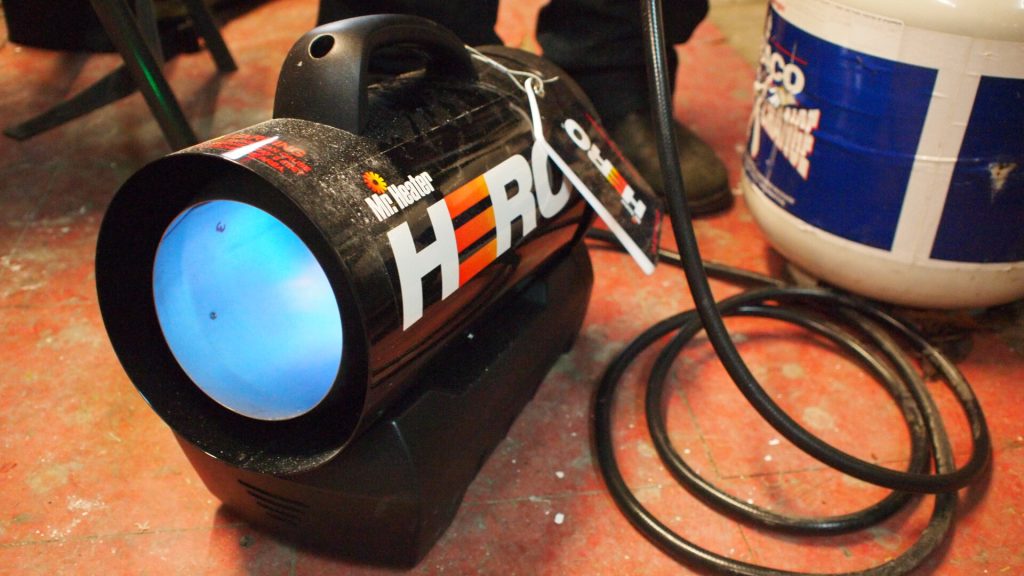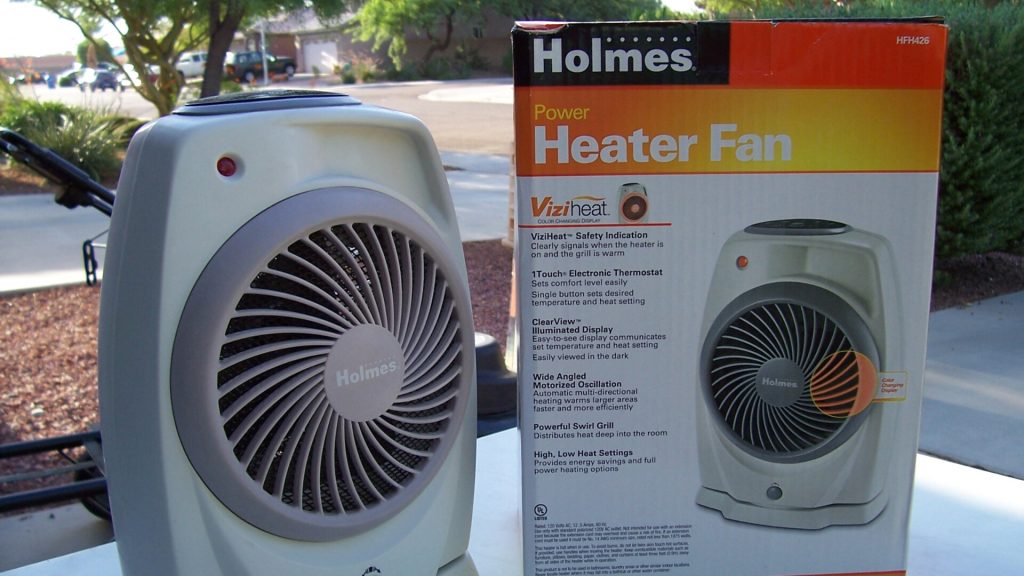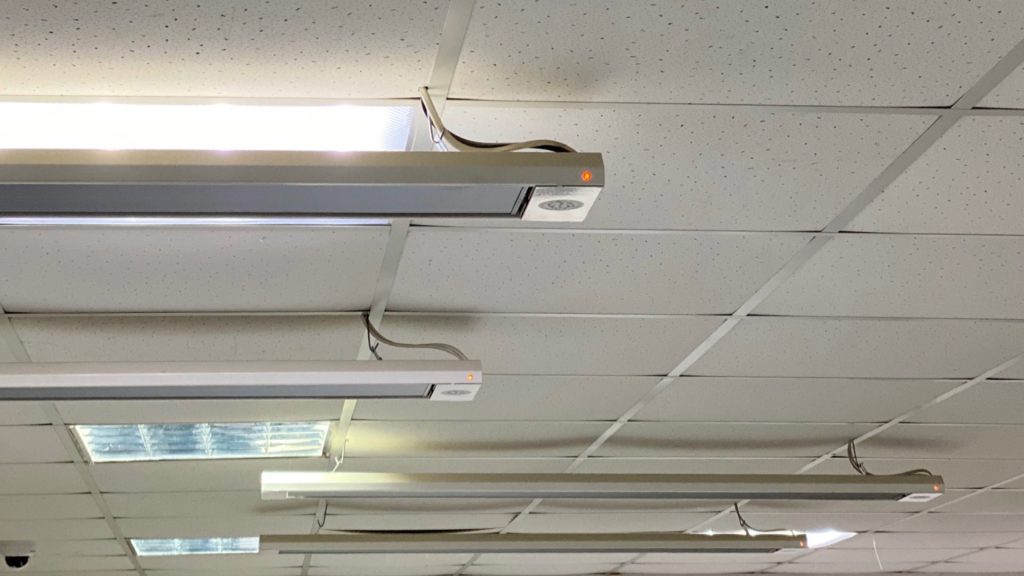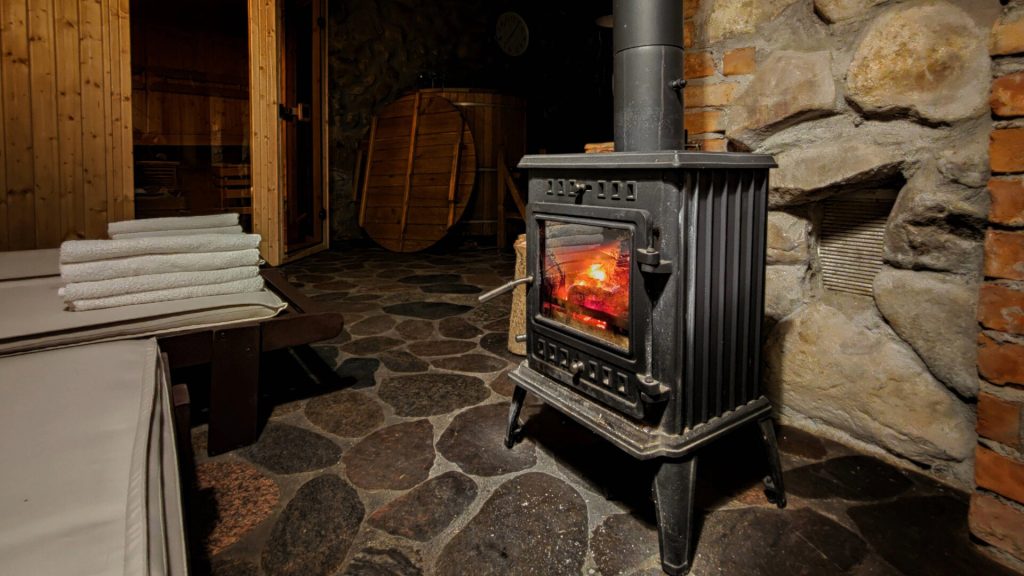Frigid outdoor temperatures combined with drafts from garage doors can lead to uncomfortably cold garage spaces. This article explores 12 potential heating solutions to keep your garage warm throughout the winter months.
Covering a range of budget-friendly and more heavy-duty options, these tips provide homeowners with actionable ideas to make their garages more habitable workspaces or storage areas during cold weather.
Why Insulate The Garage
There are several challenges to heating a garage, including lack of insulation, exposure to outdoor elements, and its typically large square footage. Garages are often uninsulated or poorly insulated, allowing heat to escape easily.

They also frequently have windows, doors, attics, and basements adjoining outdoor areas, providing additional avenues for heat loss. Moreover, garages are usually much larger than other rooms in a house, so they demand heating equipment capable of producing and distributing enough warmth.
Major Areas That Need Insulation
There are several areas in a typical garage that require insulation. The garage door is a major source of heat loss. Weatherstripping or installing a thermal break can help reduce air infiltration around the edges and seals of the door.

The walls and ceiling are also primary areas where heat escapes. Windows are another weak point and a way for heat to seep out. Covering windows with a plastic shrink film or radiant barrier and sealing and caulking around the edges can help minimize heat loss through windows.
Forced-Air Heater
Forced-air heaters are an affordable and versatile option for heating a garage. These heaters work by blowing hot air into the space, which then circulates to warm the room. Forced-air heaters can be powered by natural gas, propane, or electricity.

Forced-air heaters are convenient to operate but do have some drawbacks. The moving air can blow around dirt and debris in the garage, which may be problematic for those using the space as a workshop.
Convection Heater
Convection heaters are versatile appliances for heating a garage space. They operate by circulating hot air through the unit and into the surrounding area. As the heated air rises, cooler air is drawn into the bottom of the unit, where it is warmed and released again, creating a circular flow known as convection currents.

The power source for convection heaters includes electricity, natural gas, and propane. Electric models typically require a grounded outlet with adequate voltage to operate and can heat a garage in 30 to 60 minutes, depending on the size of the space.
Ductless Heating and Cooling
Ductless heating and cooling systems, also known as mini-split systems or split-ductless systems, are an efficient solution for heating a garage. These systems heat or cool a space using a single outdoor unit rather than requiring an entire HVAC system.

They are energy efficient, thereby reducing utility bills, and environmentally friendly since they meet stringent energy efficiency standards.
In-Floor Heat
In-floor heating systems provide comfortable warmth for garages, especially for those working on projects at floor level. Installing radiant heat panels under the floor delivers heat directly where it’s needed.

Radiant floor heating systems circulate warm fluid through a network of pipes under the floor. The heat radiates up to warm the floor surface and surrounding air.
Add a Propane Heater
Propane heaters are an affordable and effective way to warm a garage. Propane, also known as liquid petroleum gas or LPG is a clean-burning and high-energy fuel source. Propane heaters come in a range of sizes to suit the needs of any garage.

For a small to mid-size garage, a 30,000 to 50,000 British Thermal Unit (BTU) unit should suffice, while larger garages may require a 60,000 BTU or higher capacity heater.
Electric Ceiling Panels
Electric radiant ceiling panels are an energy-efficient way to heat a garage. These panels are installed directly on the ceiling and emit infrared radiation that warms objects in the room, including people and vehicles.

A single panel typically produces between 200 and 1,000 watts of power, so multiple panels may be required for heating a large garage.
Consider a Mounted Electric Heater
Mounted electric heaters are an efficient option for heating a garage space during winter. These wall-mounted units are hardwired to a 240-volt power supply, enabling them to produce ample heat for warming an entire garage.

Unlike portable space heaters, mounted electric heaters do not require frequent refueling or recharging and can operate for extended periods. They are also safer than space heaters since they are securely installed and do not present tripping hazards.
Portable Space Heater
Portable space heaters are a simple way to provide supplemental warmth for a garage. These units come in a range of sizes and price points to suit any budget. As recommended by the U.S. Department of Energy, it is important to choose a space heater that is properly sized for the area it will heat.

Space heaters that run on electricity are convenient and affordable options for most homeowners. Electric space heaters plug into a standard wall outlet and use an internal heating element to warm the surrounding air.
Install an Infrared Heater
Infrared heaters can be an excellent solution for heating a garage. Unlike convection heaters that heat the air, infrared heaters emit infrared radiation that directly heats objects and people in space. As the objects warm, they release the heat into the surrounding area.

Low-intensity infrared tube heaters, rather than the red-glowing units, are the safest and most efficient option for garages. The tube heaters have quartz heating elements inside a metal tube. As the elements heat up, they emit infrared radiation out of the tube to warm the space.
Wood Burning Stove
A wood-burning stove can be an affordable way to heat a garage space during winter months. However, there are safety precautions one must take to properly and legally install a wood-burning stove. First, check with the local government for any permits required for installing a wood-burning stove in a garage.

Failure to obtain proper permits could result in legal issues. Next, contact your homeowner’s insurance provider to ensure installing a wood-burning stove will not void the policy.
Planning is Key
There are many effective solutions for keeping your garage comfortable during cold winter months. From portable space heaters to insulation upgrades, homeowners have several options to choose from based on their budget and goals.

Proper planning and preventative maintenance will allow you to select the best heating method for your garage and enjoy the space year-round with minimal discomfort. Considering both cost and efficiency will lead to the ideal system that keeps you warm while avoiding energy waste.






